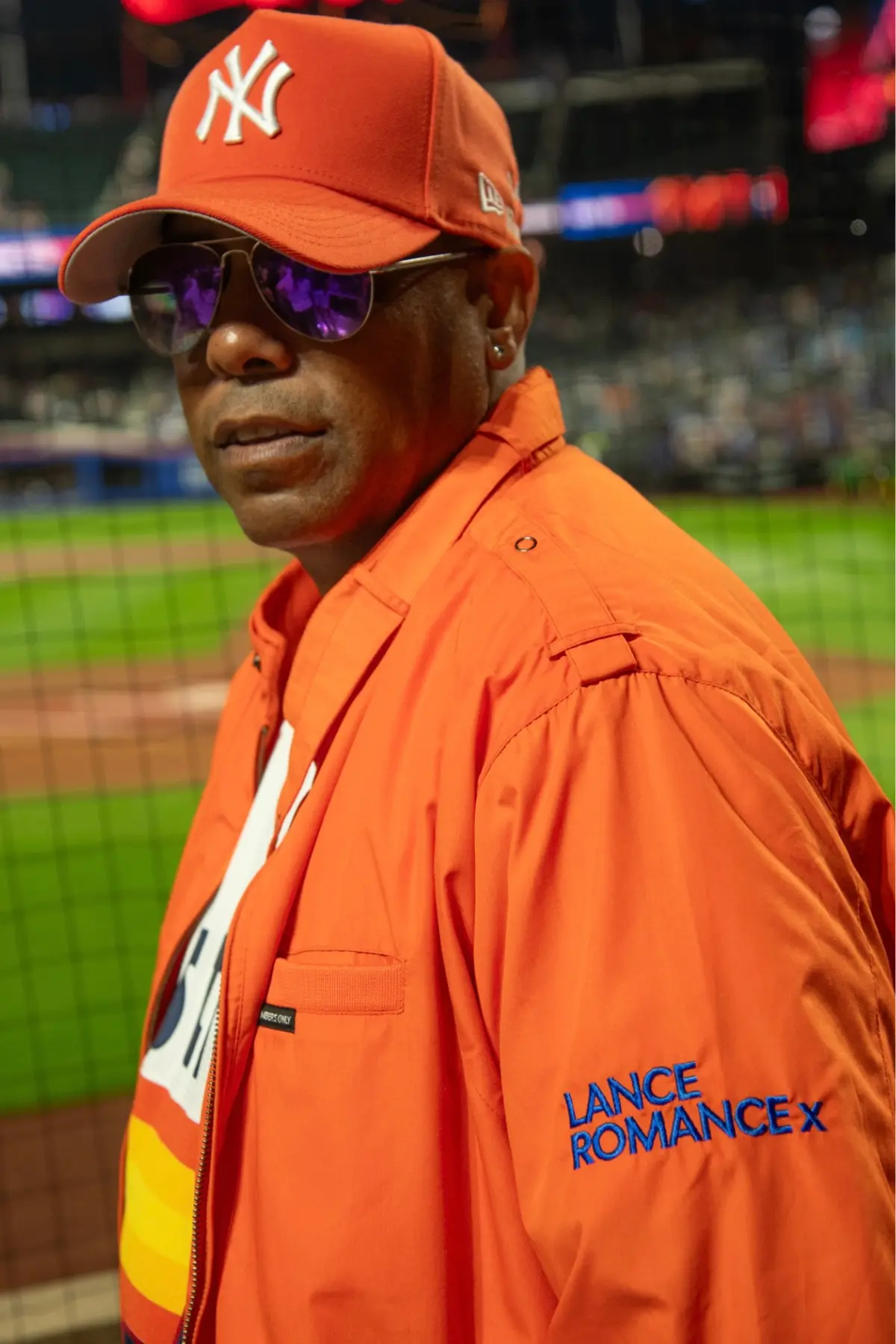Key facts (fast)
Context The album’s framing fuses backstage mythology (glitter, grit, discipline) with confessional pop—prime terrain to map hip-hop’s producer logic (cadence, motif, sample-mindset) onto Swift’s show-tuned storytelling.
Exclusive Interviews
From New Jack Swing roots to a full 2025 reset, Lance unpacks the “why now,” the hard lessons, and how indie really works—then flips The Life of a Showgirl through a Bronx hip-hop/R&B lens, weaving in his powerful Andy Gibb story and tribute. History, disco and pop all collide with right now. Hit play on the full video below, then share this page.

“The Andy Gibb Promise: Lance Romance on Bee Gees, Disco & Indie Power and in the 2nd interview Lance Romance reframes The Life of a Showgirl through a Bronx hip-hop/R&B lens—history meets now.”
“Lance Romance reframes The Life of a Showgirl through a Bronx hip-hop/R&B lens—history meets now.” Here’s how a veteran of the New Jack Swing era reads Swift’s 12th studio album: the stagecraft, the character-driven storytelling, and the rhythmic DNA that connects pop spectacle to hip-hop’s producer bench.
Context The album’s framing fuses backstage mythology (glitter, grit, discipline) with confessional pop—prime terrain to map hip-hop’s producer logic (cadence, motif, sample-mindset) onto Swift’s show-tuned storytelling.
Swift’s title invokes the classic dichotomy of spotlight versus solitude. In hip-hop terms, that’s the front-of-house flex versus the back-of-house grind: the walk-on music and the load-out. The album’s voice balances brass-buttoned confidence with controlled vulnerability, the same tension that powers great rap albums—think curtain-call glamour over drum-tight discipline.
Her use of a named character—Kitty Finlay—extends that fiction-meets-memoir lineage. Hip-hop has always used alter egos and composites to safely dramatize truth; Swift’s showgirl mirrors that device, creating space to explore the cost of performance while keeping narrative options open. It’s not escapism so much as a narrative zoom lens.
Even on a pop-forward project, the heartbeat is percussive logic. Call it arrangement swing: the way conversational phrasing lands against the grid, how a pre-chorus tees up the drop like an emcee saving a punch-in for the bar line. Where New Jack Swing once threaded R&B vocals through boom-bap machines, Showgirl threads theater through precision pop drum programming.
Listen for three Bronx-coded moves: (1) **pocket control**—vocals laying just behind the beat for earned lift in the hook; (2) **recurring motifs**—hooks that reprise like sampled refrains; (3) **call-and-response**—stacks and ad-libs that simulate crowd energy, even in the studio. It’s showtime logic, but it’s also block-party DNA.
From Bronx origins to the New Jack Swing crucible, Lance Romance’s career reads like a syllabus in pop-adjacent hip-hop craft: drum machines, disciplined hooks, and the courage to choose fortune over fame. That vantage makes Showgirl feel familiar: an artist reframing her present with techniques hip-hop codified—persona, motif, and producer-level edit discipline—then staging it with Broadway-grade lights.
Where some hear glossy pop, Lance hears process: cut-and-build sections, mic-level intimacy against maximal choruses, and a live-room fantasy that nods to tape-era grit without abandoning modern punch. In other words: the musical version of getting the bag while keeping the soul.
Duet as dramaturgy. Trading lines functions like classic R&B call-and-response: two perspectives, one spotlight, harmonies that tighten into the chorus to simulate stage lift. Theatrical, but mixed like radio rap—center-heavy, ad-lib edges for width.
Double-entendre as design choice: the lyric flips a folk superstition into adult wit. Hip-hop has long prized polysemy—bars that mean what you think they mean, and then something else. Here, the wink is the point; the production keeps the pocket steady so the wordplay can breathe.
By naming a figure and letting her carry narrative weight, Swift taps the alter-ego tradition from rap—think narrators who are real and invented at once. It’s safer than memoir and more precise than metaphor. The Bronx read: a story you can perform under lights without losing the person behind it.
The sequencing plays like a setlist—overture, mid-set spotlight, encore-energy closer. Hip-hop albums with skits once mimicked this; Showgirl does it with arrangement, letting interludes live inside transitions rather than between tracks.
The Life of a Showgirl lands as a choose-your-own-metaphor: fame as job, love as choreography, growth as set change. Through a Bronx hip-hop/R&B lens, it’s also a craft memo: persona is a tool, rhythm is a truth serum, and spectacle is just structure with better lighting. Swift leans into character to protect the private while elevating the public—an old hip-hop trick applied to a new pop chapter.
For Lance Romance, the album’s lesson is simple: edit hard, perform harder, own the narrative. The showgirl gets to choose what’s seen. That’s not evasion; that’s authorship—the same principle that powered tape-era innovators and still powers anyone building independent catalog today.
It released on Oct 3, 2025 with a midnight ET global roll-out; local drops followed by time zone (e.g., UK early AM, Australia afternoon/evening depending on DST). Select cinemas hosted an official release-party film tied to the album launch.
Primary collaborators include Max Martin and Shellback alongside Taylor Swift on production; the title track features Sabrina Carpenter.
A character Swift employs to dramatize the costs and thrills of showbiz—a symbolic composite that blends inspiration and caution, continuing her tradition of narrative world-building through named figures.
It’s a double-entendre piece that began with a superstition joke and morphed into playful, adult wordplay—an example of lyric polysemy set over steady, modern pop percussion.
Streaming day-one performance signaled outsized interest, continuing Swift’s trend of breaking platform benchmarks.
In this conversation, we explore the decisions behind a seasoned artist’s modern relaunch: distribution choices, pacing singles, the practicality of playlisting, and why narrative still steers algorithms. If you’re an independent artist, the playbook here is simple: choose a lane, sequence with intent, lead with a moment you own, and let the community amplify.